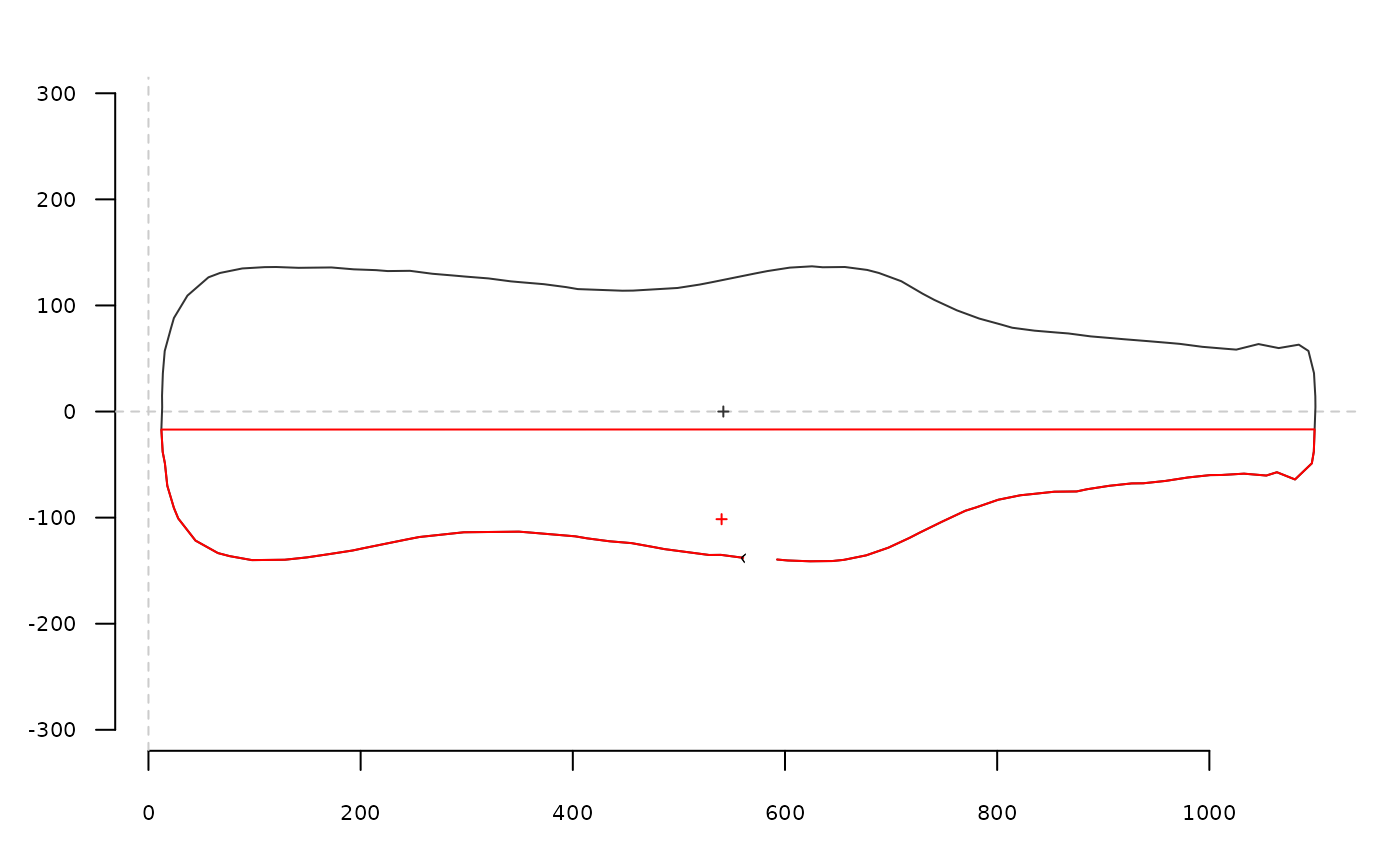Useful when shapes are aligned along the x-axis (e.g. because of a bilateral symmetry) and when one wants to retain just the lower side.
Arguments
- coo
matrixof(x; y)coordinates or any Coo object.- slidegap
logicalwhether to apply coo_slidegap after coo_down
Note
When shapes are "sliced" along the x-axis, it usually results on open curves and thus to huge/artefactual gaps between points neighboring this axis. This is usually solved with coo_slidegap. See examples there.
Also, when apply a coo_left/right/up/down on an Out object, you then obtain an Opn object, which is done automatically.
See also
Other opening functions:
coo_left(),
coo_right(),
coo_up()
Other coo_ utilities:
coo_aligncalliper(),
coo_alignminradius(),
coo_alignxax(),
coo_align(),
coo_baseline(),
coo_bookstein(),
coo_boundingbox(),
coo_calliper(),
coo_centdist(),
coo_center(),
coo_centpos(),
coo_close(),
coo_dxy(),
coo_extract(),
coo_flipx(),
coo_force2close(),
coo_interpolate(),
coo_is_closed(),
coo_jitter(),
coo_left(),
coo_likely_clockwise(),
coo_nb(),
coo_perim(),
coo_range(),
coo_rev(),
coo_right(),
coo_rotatecenter(),
coo_rotate(),
coo_sample_prop(),
coo_samplerr(),
coo_sample(),
coo_scale(),
coo_shearx(),
coo_slice(),
coo_slidedirection(),
coo_slidegap(),
coo_slide(),
coo_smoothcurve(),
coo_smooth(),
coo_template(),
coo_trans(),
coo_trimbottom(),
coo_trimtop(),
coo_trim(),
coo_untiltx(),
coo_up(),
is_equallyspacedradii()
Examples
b <- coo_alignxax(bot[1])
coo_plot(b)
coo_draw(coo_down(b), border='red')
